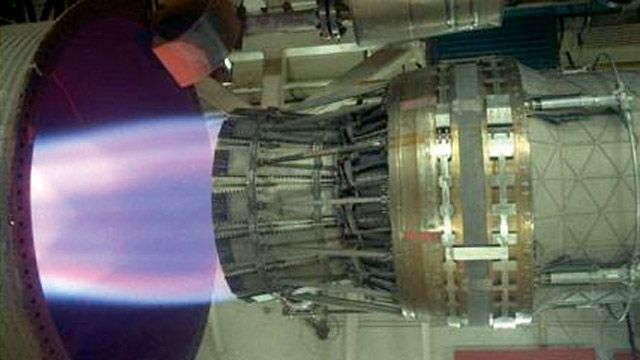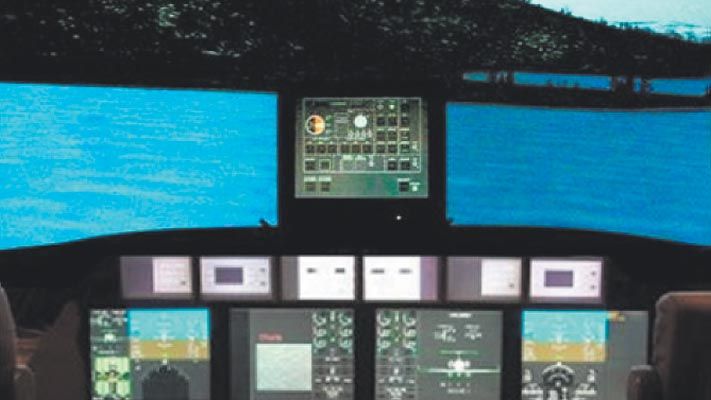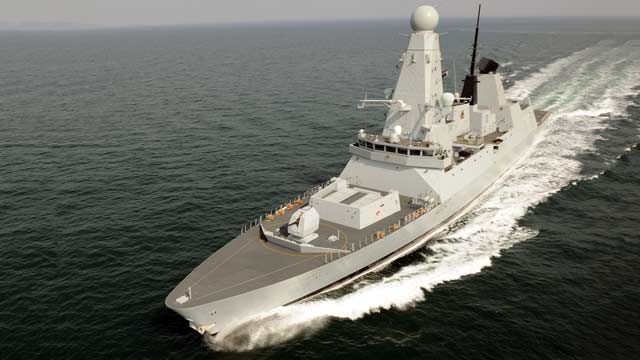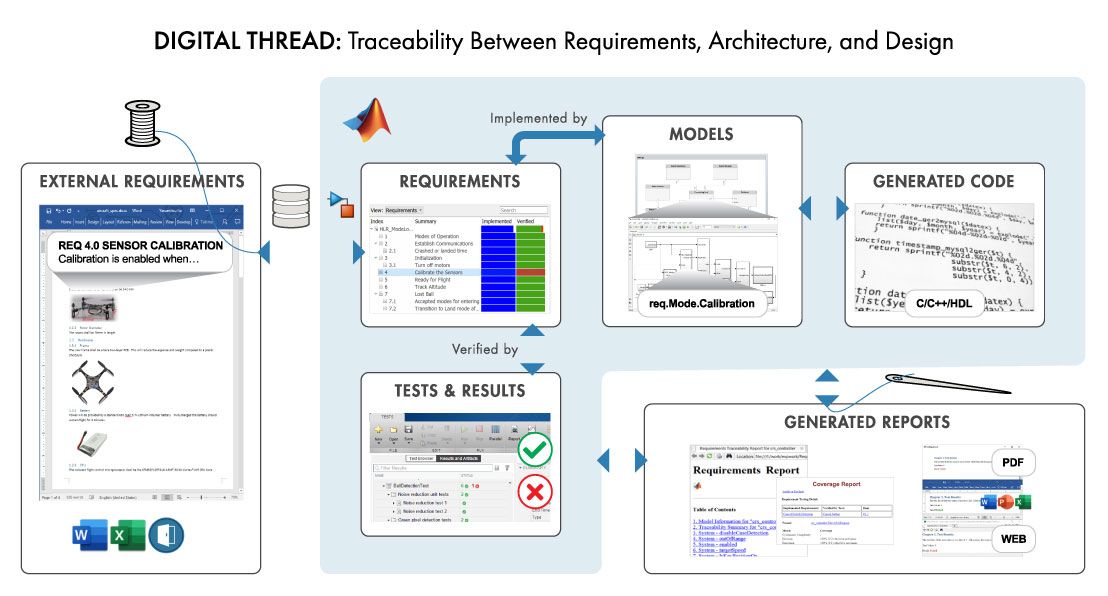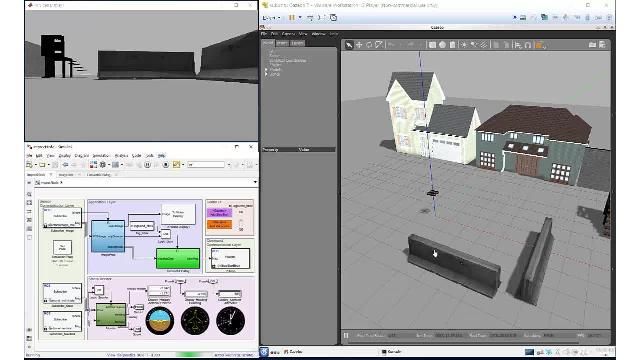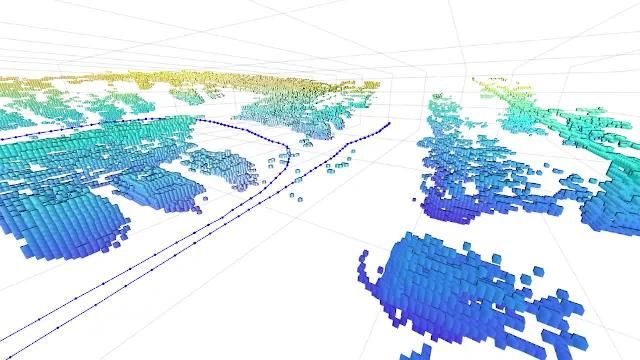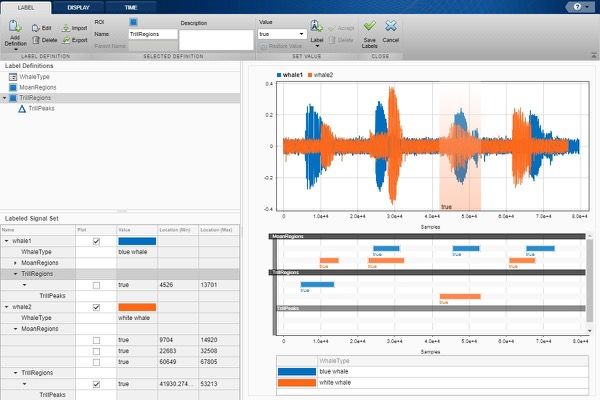Aerospace and defense companies worldwide rely on MATLAB and Simulink across all technology readiness levels, from prototypes to their most important safety and mission critical systems. MATLAB and Simulink are used in major programs across all domains, such as the F-35 Joint Strike Fighter and Mars Exploration Rover, and accelerate research and development in areas like autonomous systems, hypersonics, advanced wireless systems, and hybridization and electrification of aircraft.
Digital engineering with Model-Based Design helps to reduce program risks (like performance, schedule, and integration) through early design simulation and code generation. Simulink for systems engineering also establish a digital thread, providing traceability between requirements, architecture, design, auto-generated code, and test artifacts. This ensures design completeness and eases change management of complex systems, all within the same environment.
During the “third wave” of artificial intelligence, domain experts are also using MATLAB and Simulink to develop AI solutions to make earlier predictions and improve decision making. MATLAB and Simulink allow teams to incorporate a variety of data sources and accelerate the implementation of machine learning, deep learning, and data science algorithms into their applications that can be deployed to hardware or the cloud.
“Model-Based Design gave us advanced visibility into the functional design of the system. We also completed requirements validation earlier than was previously possible and simulated multiple simultaneous component failures, so we know what will happen and have confidence that the control logic will manage it.”
Christopher Slack, Airbus
Using MATLAB and Simulink for Aerospace and Defense

MathWorks Next Generation Aerospace
Watch how you can value modeling and enable collaboration to go beyond individual system design to cover complex Systems of Systems
Systems Engineering
Systems engineering plays an increasingly crucial role in managing the complex requirements, architectures, and integration of multiple domains to ensure the delivery of systems with exceptional performance and safety. Simulink provides an easy-to-use architecture modeling and analysis environment that allows you to fully synchronize requirements with your Model-Based Design.
MATLAB and Simulink support digital engineering workflows by allowing users to:
- Capture, view, analyze, and manage requirements via a digital thread (33:33) that provides bidirectional traceability between requirements, architecture, design, and implementation and supports coverage and change impact analysis
- Develop and examine system architecture models from any combination of requirements, existing Simulink models, ICDs, and externally created architectures
- Perform data-driven trade studies to compare, analyze, or optimize system architecture
- Automatically generate reports for coverage, test cases, ICDs, and bug reports
- Simulate the system composition to verify system-level behavior
- Satisfy industry safety standards like DO-178C, DO-254, and ARP-4754
Learn More
- Getting from Concept to Code Safely and Efficiently with Model-Based Design (53:22)
- What Is Requirements Toolbox? (2:25)
- Validation and Verification Spanning Models to Code
- Automating Verification and Validation with Simulink
- MathWorks Vision for Systematic Verification and Validation (16:11)
- DO-178C Software Workflow with Qualified Code Generation (15:25)
- Digital Transformation with Model-Based System Engineering Tools (0:40)
- Service-Oriented Architecture
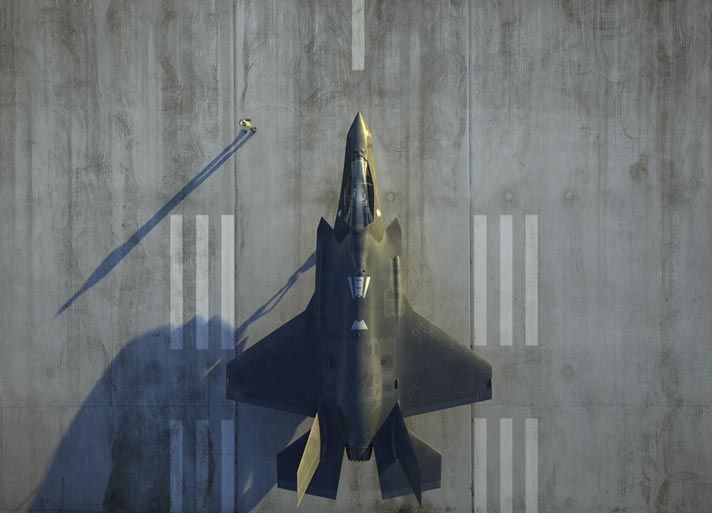
Flight Controls and Engine Controls
Design and test safety-critical control systems through simulation before automatically generating code that is then integrated into the physical platform. Accelerate the development cycle by making it easier to design for different scenarios and platform configurations, test with hardware-in-the loop, and qualify control logic to safety standards like DO-178C – all within the same environment.
MATLAB and Simulink allow control engineers to:
- Get started and build plant models faster with multiple examples of flight controls, 6-DoF, environment models, and vehicle models such as the NASA HL-20
- Model the whole vehicle and its subsystems
- Use prebuilt tools to automatically tune multivariable controllers (7:52) and leverage advanced control strategies, such as model predictive control and robust control
- Design and troubleshoot fault detection, isolation, and recovery logic
- Automatically generate optimized code to microprocessors and FPGA
- Perform verification and validation, and certify to safety standards
Customer Success
- Pilotless Flight of Aurora Centaur (0:39)
- Bell Helicopter Ensures a Flawless First Flight (4:39)
- Airbus Develops Fuel Management System for the A380 Using Model-Based Design
- Gulfstream Aerospace Develops Pilot-in-the-Loop Aircraft Simulator
- NASA's X-43A Scramjet Achieves Record-Breaking Mach 10 Speed Using Model-Based Design
- MATLAB and Simulink Help Land Unpiloted Boeing Spacecraft
Unmanned Aerial Vehicle Design
Unmanned aerial vehicle (UAV) engineers and scientists use MATLAB and Simulink to design and tune control systems and platform-agnostic intelligence, surveillance, and reconnaissance (ISR) mission algorithms, model real-world systems, then automatically generate and verify the code – all from one software environment.
MATLAB and Simulink enable engineers to:
- Connect to and control UAVs and their components from MATLAB and Simulink
- Communicate with the platform using the Robot Operating System (ROS) and MAVLink
- Simulate common UAV sensors such as GPS, IMU, INS, and Altimeter
- Co-simulate your UAV applications by connecting directly to simulators like Gazebo and Unreal Engine
- Develop hardware-agnostic control algorithms and perform 3D simultaneous localization and mapping (SLAM), path planning, and trajectory generation with native quaternion support
- Eliminate hand-coding by automatically generating embedded code for microcontrollers, FPGAs, PLCs, and GPUs in many languages
- Connect to common UAV autopilots, such as PX4, and low-cost hardware, such as Raspberry Pi, using prebuilt hardware support packages
- Work with legacy code and integrate with existing systems
Learn More
- Drone Simulation and Control Video Series
- Approximate High-Fidelity UAV model with UAV Guidance Model block
- Motion Planning with RRT for Fixed-Wing UAV
- Sensor Fusion and Tracking with MATLAB (39:15)
- Programming Drones with Simulink (33:49)
- Simulating Quadcopter Missions with Simulink and ROS (18:22)
- Simulating Unmanned Aerial Vehicles (UAV) with MATLAB and Simulink (3:37)
Wireless Systems
Design, prototype, and test advanced algorithms, multi-function RF systems, and antenna arrays for the next generation of wireless communications (27:30), radar, and electronic warfare systems (35:28). With MATLAB and Simulink, research engineers can rapidly prove viability of new technology concepts, eliminate design problems early in the development cycle, and streamline design verification. With MATLAB and Simulink tools, engineers can:
- Model and visualize complex communication and radar scenarios in dense spectrum environments
- Simulate end-to-end communication links including baseband, RF, and antenna components
- Generate and analyze standards-based (5G, LTE, WLAN) and custom waveforms
- Model antenna arrays and beamforming architectures with Antenna Toolbox
- Model the dynamics of ground-based, airborne, or ship-borne radar systems with moving targets and radar platforms
- Design and simulate multi-sensor tracking and positioning systems
- Create reusable golden reference models for iterative verification of wireless designs, prototypes, and implementations
- Prototype and test algorithm designs on popular software-defined radio hardware such as USRP and PlutoSDR
Learn More
- Waveform Generation Using MATLAB and SDR (3:45)
- 5G Explained
- Mapping RF Propagation for Wireless Communications (26:09)
- Hybrid Beamforming for Massive MIMO Phased Array Systems
- Developing with and Deploying to SDR Hardware
- RF System Modeling and Analysis
- Sensor Fusion and Tracking for Autonomous Systems
Artificial Intelligence for Aerospace and Defense
MATLAB and Simulink provide a comprehensive platform for solving AI challenges from predictive maintenance to complex tasks like multimodal target identification. MATLAB empowers engineers even if they have limited AI experience. It helps teams better AI datasets, tackle integration challenges, reduce risk, and continuously test models in a system-wide context.
- Optimize service of the fleet using predictive maintenance and digital twin (8:28) capabilities, develop algorithms to detect and predict faults and failures, and estimate remaining useful life (9:34)
- Generate simulation-based training and test data for applications like radar waveform and target classification algorithms, and create complex control systems (22:32) with reinforcement learning.
- Employ deep learning and machine learning algorithms to create accurate models from various datatypes, and experiment with different architectures using apps and visualization tools
- Deploy models anywhere including embedded GPUs and CPUs, enterprise systems, or the cloud
Learn More
